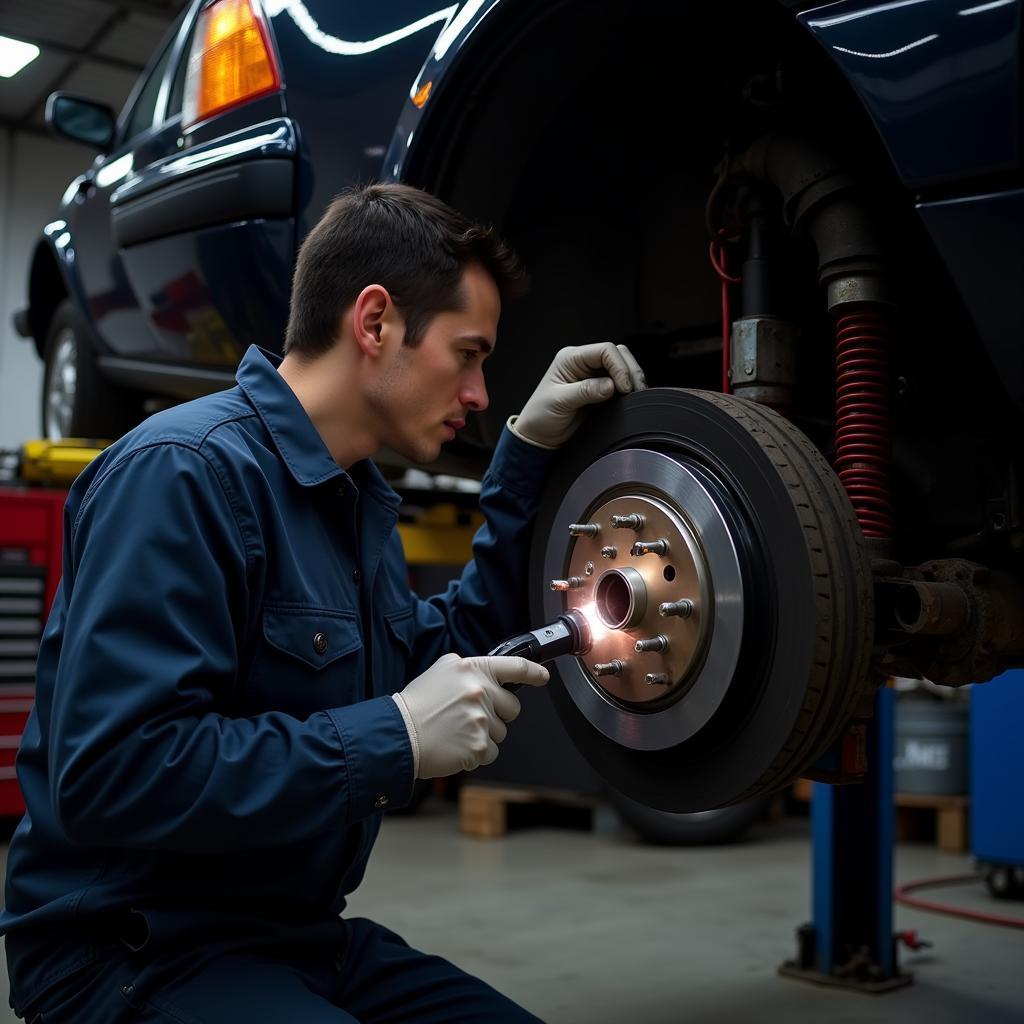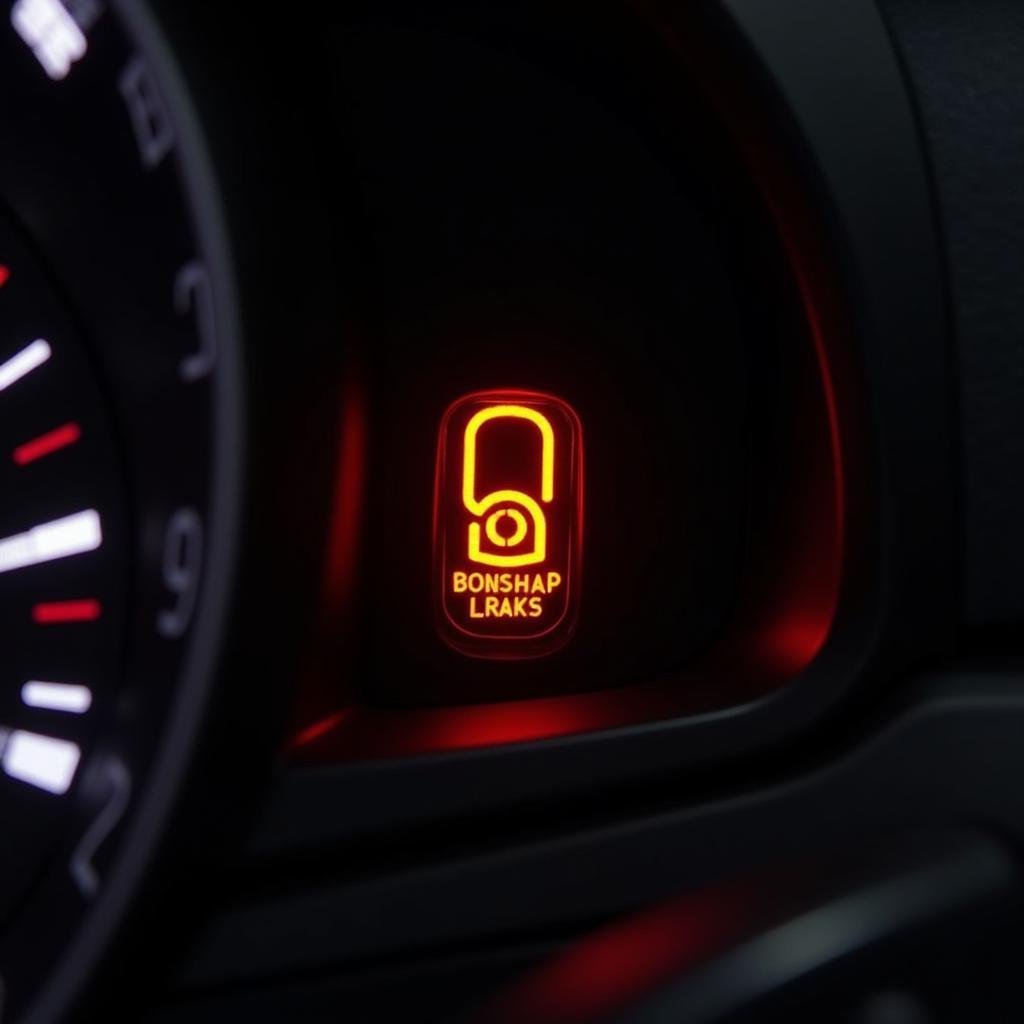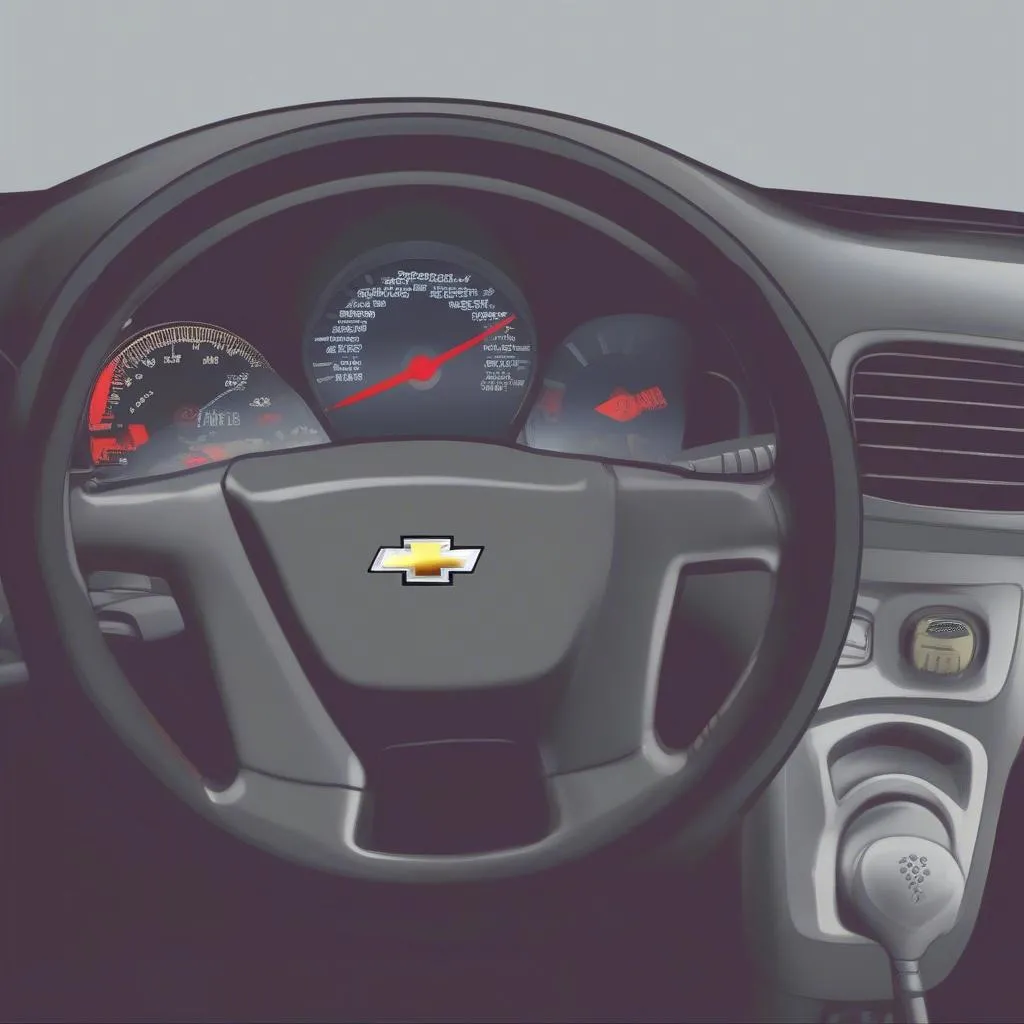If you’re driving your 2002 Saab 95 and notice both the brake warning light and the ABS light illuminated on your dashboard, don’t panic. This is a common issue, and with a little troubleshooting, you can often pinpoint the cause and get it resolved. This comprehensive guide will walk you through the potential culprits and provide practical solutions.
Understanding Your Saab’s Braking System
Before we delve into troubleshooting, it’s crucial to grasp the basics of your Saab 95’s braking system. The brake warning light typically signals a problem with the traditional hydraulic braking system, which uses brake fluid pressure to stop the car. On the other hand, the ABS (Anti-lock Braking System) light signifies an issue with the electronic system designed to prevent wheel lockup during hard braking.
Common Causes of Both Lights Illuminating
When both lights are on, it often points to a problem affecting both the hydraulic and ABS systems or a fault in a shared component. Let’s explore some of the most common culprits:
1. Low Brake Fluid Level
Low brake fluid is a leading cause of simultaneous brake warning light and ABS light activation. As brake pads wear down, the brake fluid level naturally drops. If it falls below a critical point, it can trigger both warning lights.
Solution: Check the brake fluid level in the reservoir. If it’s low, carefully top it off with the recommended brake fluid for your Saab 95 (DOT 3 or DOT 4). However, simply topping off the fluid might not solve the problem entirely if there’s a leak, so it’s crucial to inspect further.
2. Worn-Out Brake Pads
As mentioned earlier, worn brake pads can lead to low brake fluid. Additionally, some Saab 95 models have brake pad wear sensors that can trigger the warning lights when the pads are thin.
Solution: Inspect your brake pads for wear. If they appear thin or you’re unsure, consult a mechanic for a professional assessment. Replacing worn brake pads is essential for optimal braking performance and safety.
3. Faulty ABS Wheel Speed Sensor
The ABS system heavily relies on wheel speed sensors to function correctly. These sensors monitor the rotational speed of each wheel and send data to the ABS control module. A faulty sensor can disrupt this process, leading to both lights illuminating.
Solution: A mechanic can diagnose a faulty ABS wheel speed sensor using a scan tool. The faulty sensor will need to be replaced to restore proper ABS function.
4. Malfunctioning ABS Module
The ABS module is the brain of the Anti-lock Braking System. It processes data from the wheel speed sensors and regulates brake pressure to each wheel. A failing ABS module can cause various issues, including the illumination of both the brake warning light and ABS light.
Solution: Diagnosing an ABS module problem often requires specialized equipment and expertise. A qualified mechanic can test the module and, if necessary, replace it with a new or remanufactured unit.
5. Electrical Issues
Electrical problems, such as loose connections, damaged wiring, or a blown fuse, can disrupt the communication between the braking system components and the dashboard warning lights.
Solution: Carefully inspect the wiring harnesses and connections related to the braking system, particularly around the ABS module, wheel speed sensors, and brake fluid level sensor. Look for any signs of damage, corrosion, or loose connections. Check the fuse box for any blown fuses related to the ABS or braking system.
When to Seek Professional Help
While some causes, like low brake fluid, can be addressed with basic maintenance, others require specialized knowledge and tools. If you’re uncomfortable diagnosing or working on your car’s braking system, it’s always best to err on the side of caution and consult a qualified mechanic. Don’t delay seeking professional help if:
- You’ve tried basic troubleshooting steps, and the lights remain on.
- You notice unusual noises or vibrations when braking.
- Your brake pedal feels spongy or goes to the floor.
- You suspect a problem with the ABS module or other complex components.
Expert Insights
“Many car owners underestimate the importance of regular brake system inspections,” says John Miller, a certified automotive technician with over 20 years of experience specializing in European cars. “Early detection of potential issues, like worn brake pads or a slight fluid leak, can save you from costly repairs and ensure your safety on the road.”
 Mechanic Inspecting Brake System of a Lifted Saab 95 in a Garage
Mechanic Inspecting Brake System of a Lifted Saab 95 in a Garage
Conclusion
Encountering both the brake warning light and ABS light on your 2002 Saab 95’s dashboard can be alarming. However, understanding the potential causes and following the appropriate troubleshooting steps can help you address the issue promptly. Remember, your safety is paramount. If you’re ever unsure about diagnosing or fixing a problem with your braking system, always consult a qualified mechanic for expert assistance.


